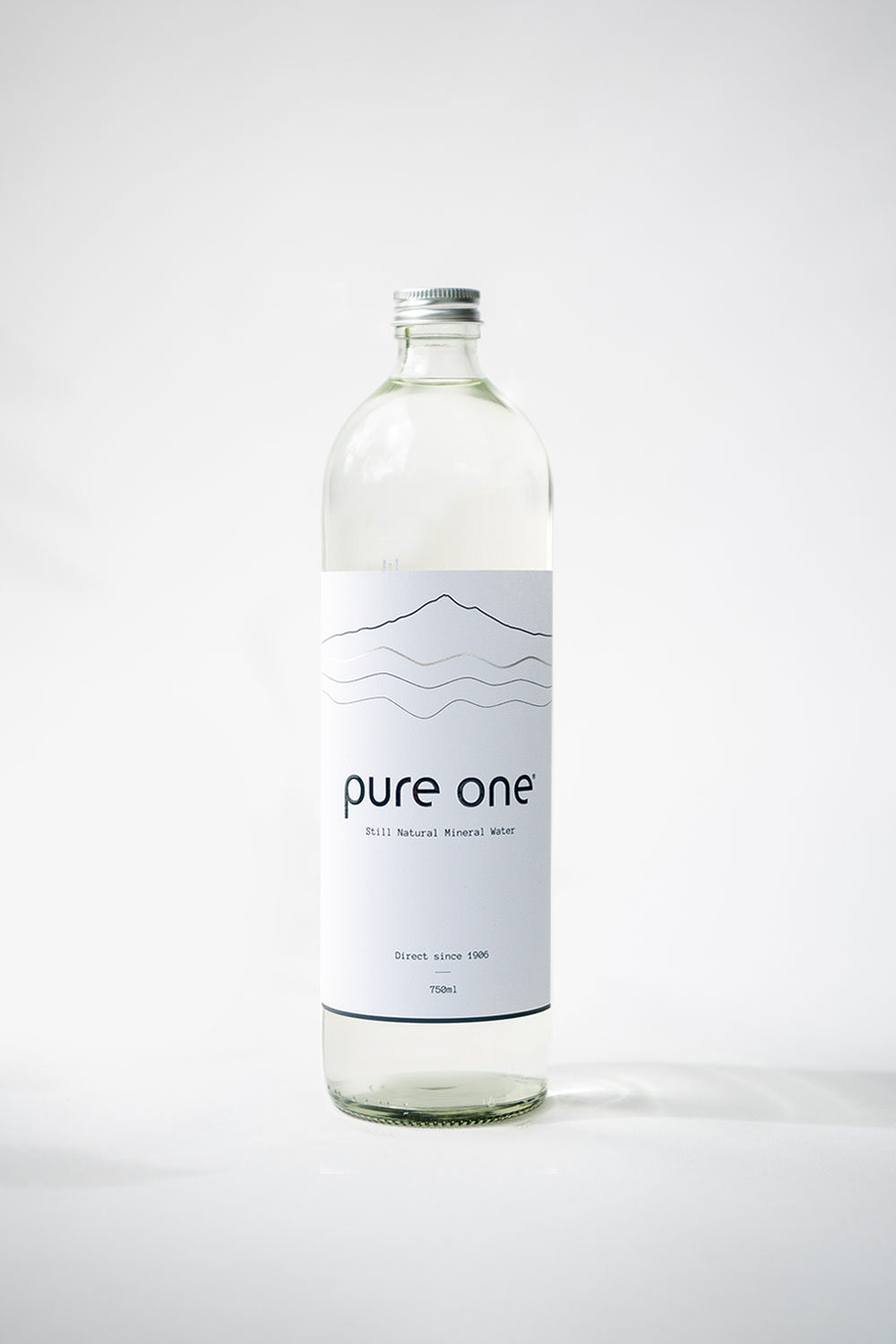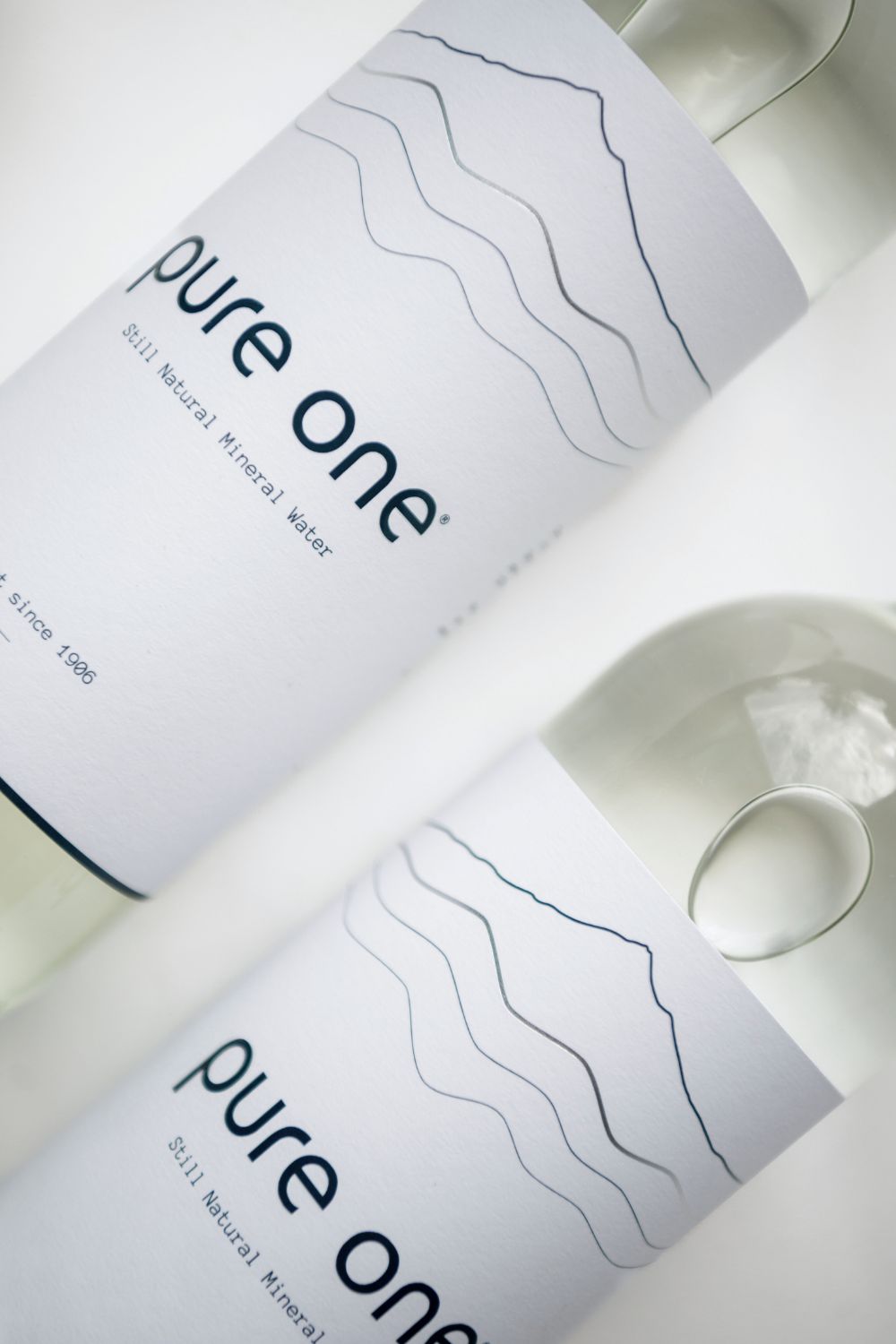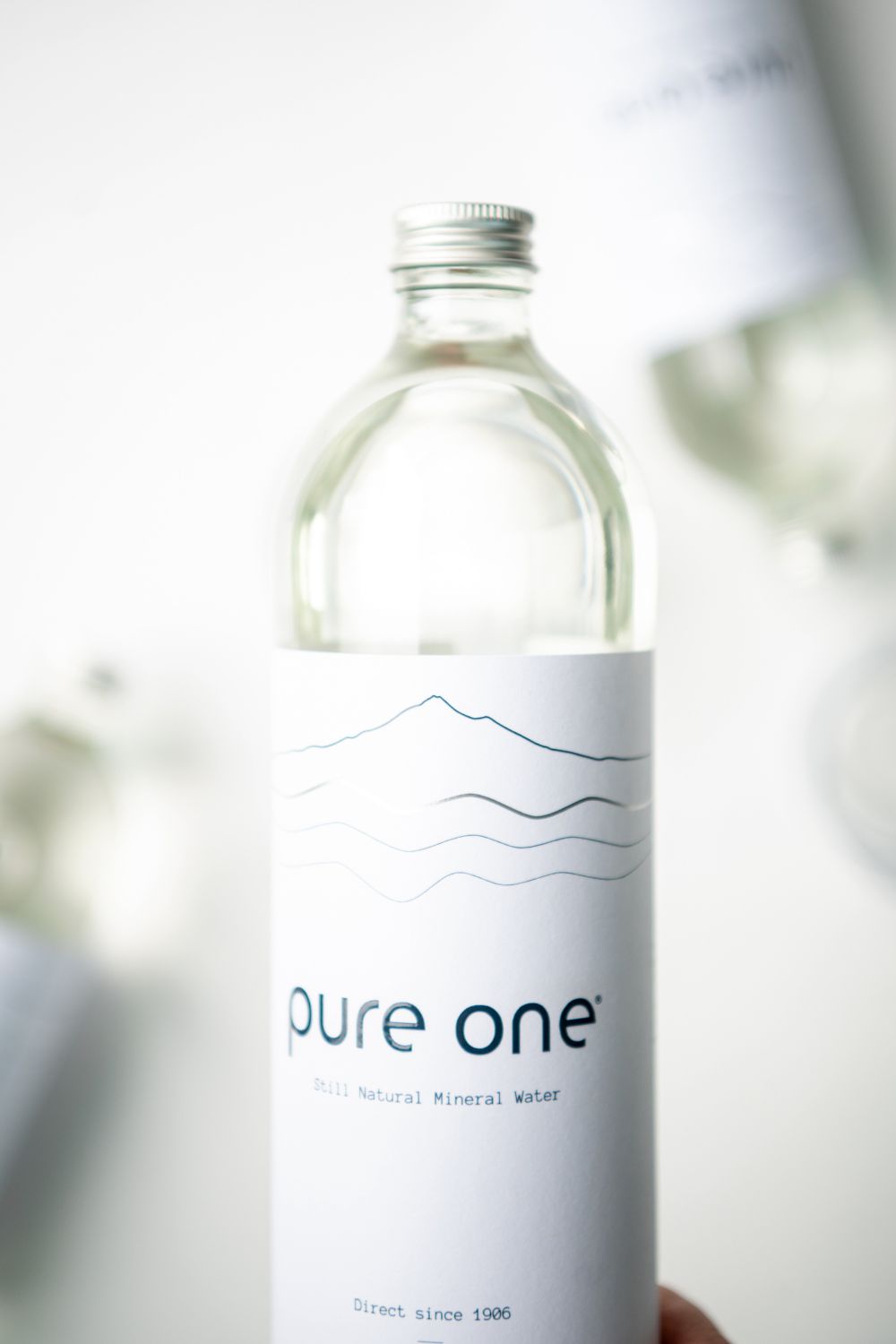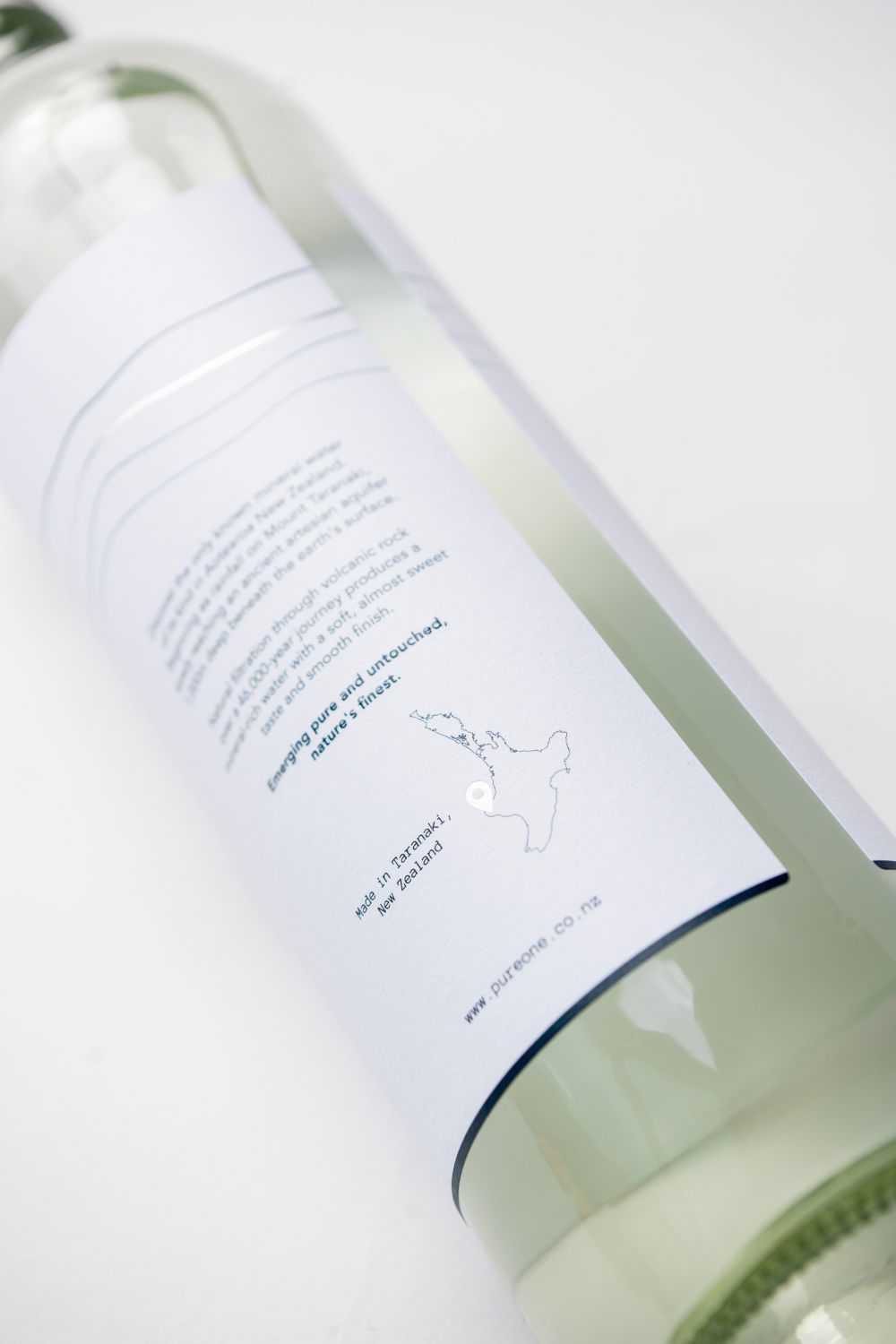Pure One I Natural New Zealand Mineral Water I 750ml Glass - Case of 6
Pure One I Natural New Zealand Mineral Water I 750ml Glass - Case of 6
Couldn't load pickup availability
Discover the only known mineral water of its kind in Aotearoa New Zealand.
Beginning as rainfall on Mount Taranaki, slowly reaching an ancient artesian aquifer deep beneath the earth's surface. Natural filtration through layers of volcanic rock over a 46,000-year journey produces a mineral-rich water with a soft, almost sweet taste and smooth finish.
Emerging pure and untouched, nature's finest.
| pH 8.4-8.5 | 780 mg/L Total Dissolved Solids |
| 17 Essential Minerals |
Soft & Smooth |
| Carbon dated 46,000 years | 100% Natural |
- We recommend serving chilled
- Buy 1 get the 2nd 25% off at checkout
- Please note these come with black caps, not silver as pictured
Our Water
Our Water
With 780 mg of mineral content per litre and 17 of the 21 minerals considered essential to good health, Pure One is the only known mineral water of its kind in New Zealand.
Direct from source in New Plymouth, Taranaki.
Sustainability
Sustainability
Pure One is committed to providing one of the most unique health waters from nature in a sustainable way, the impact that our processes have on our environment is a key focus when it comes to our small business operations.
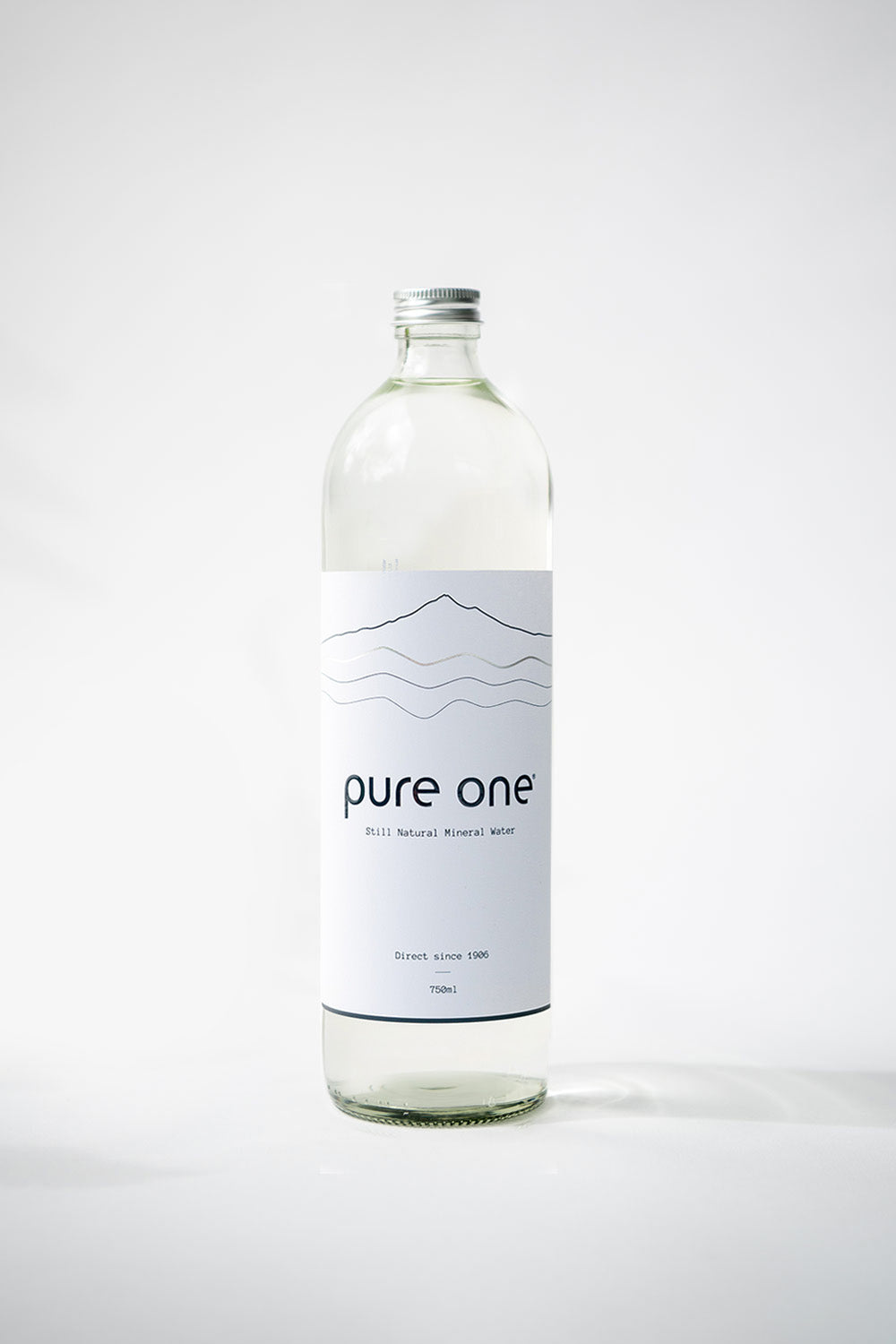
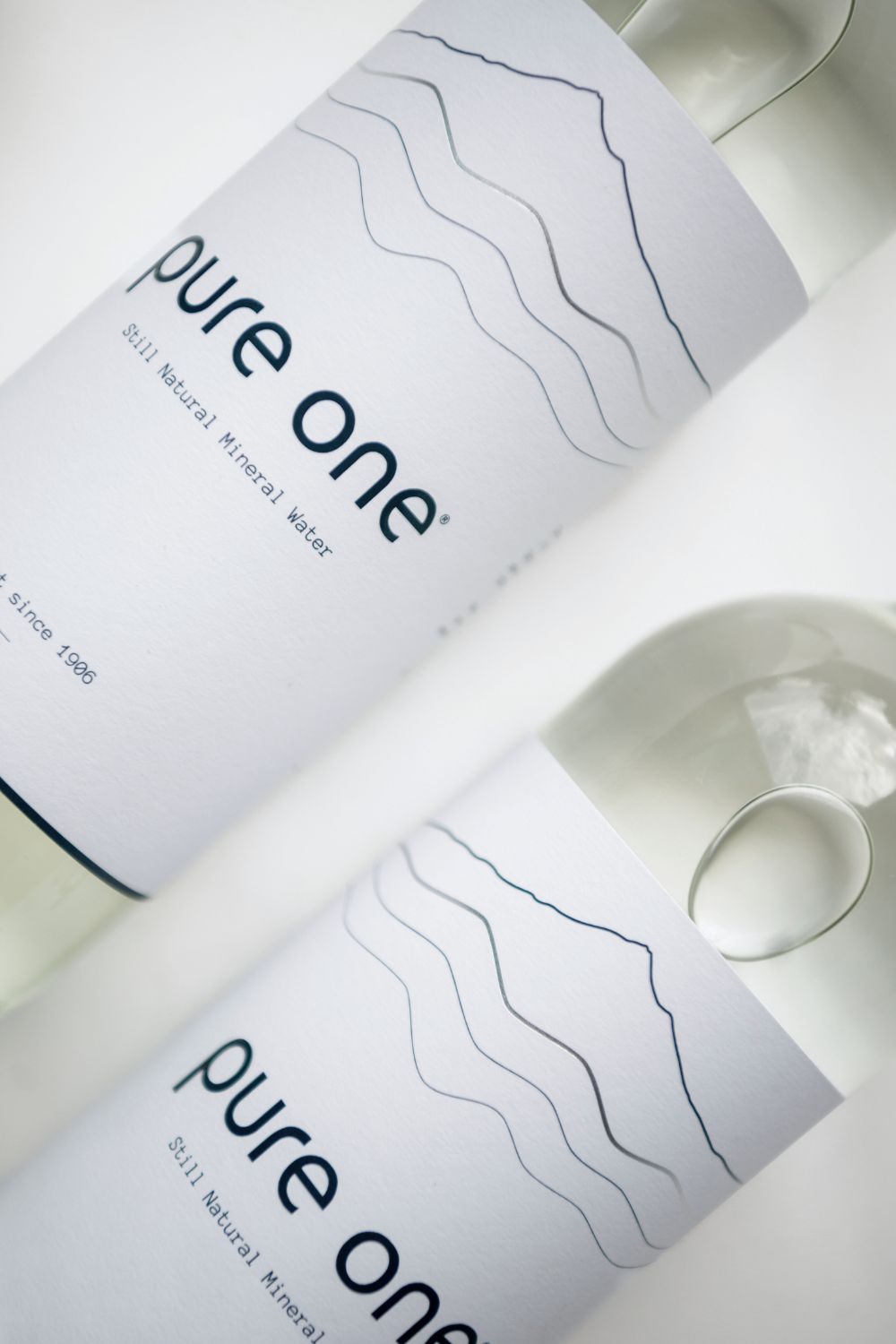
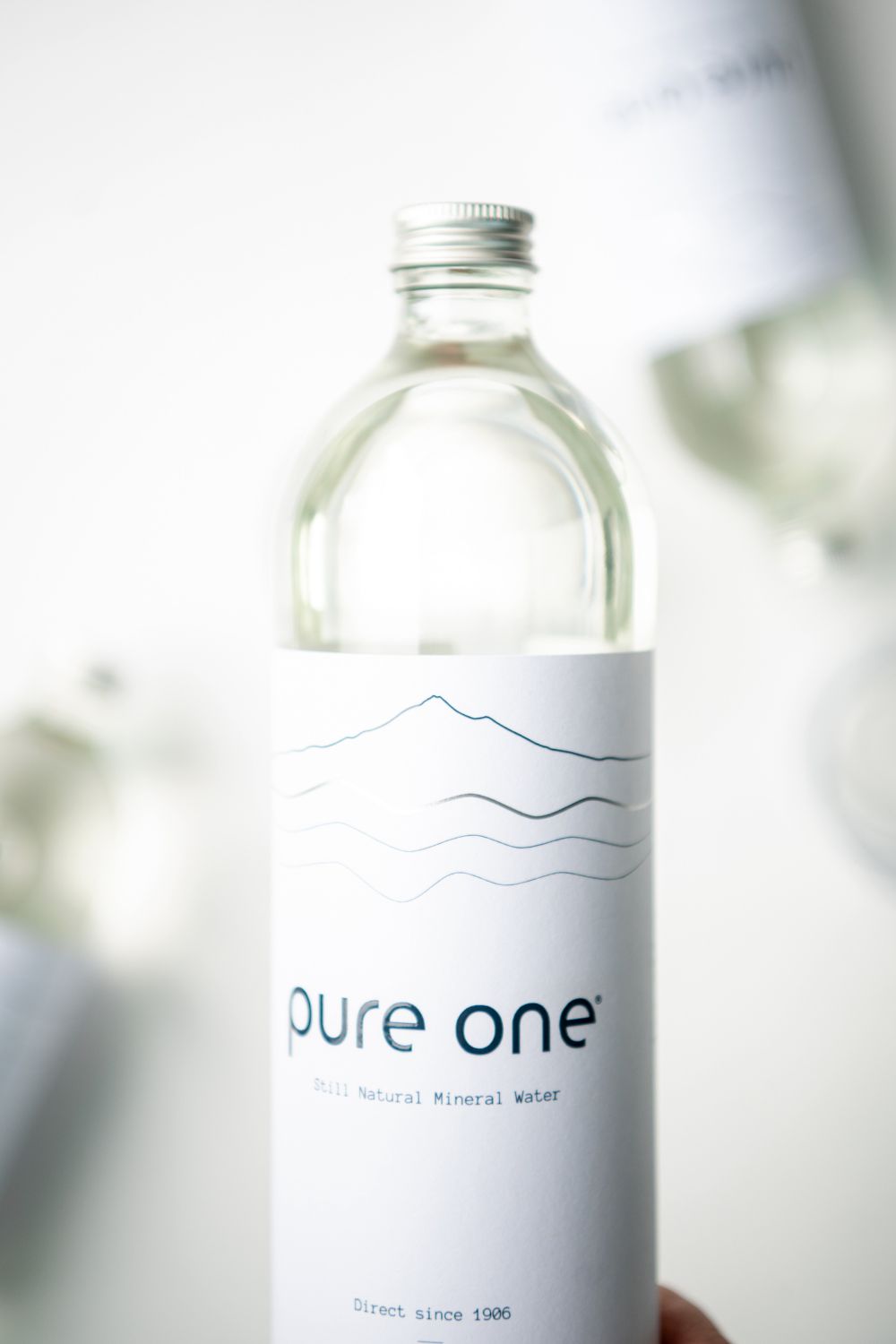
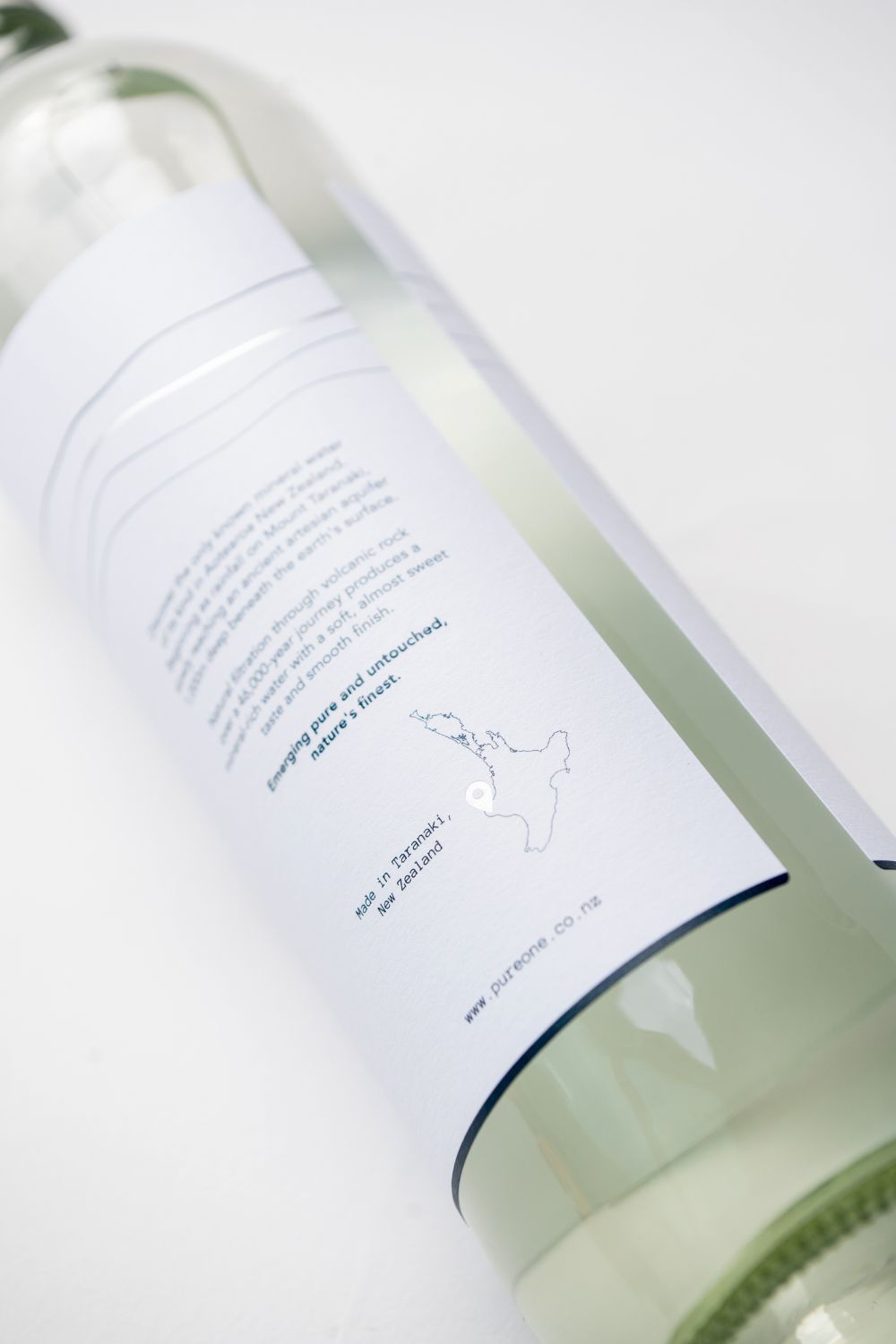
FAQ's
Where does Pure One come from?
Pure One starts as rainfall above the magnificent Mount Taranaki, Taranaki Maunga. As the water slowly travels underground through layers of porous volcanic rock, it becomes naturally enriched with essential minerals, trace elements and electrolytes, until it reaches an ancient artesian aquifer.
This artesian aquifer is known as the Matemateāonga Formation, it is aged around 4.7-5.5 million years old (it is part of the Taranaki Basin, one of the oldest basins in New Zealand at 80-100 million years old).
Pure One is the only water in New Zealand whose source comes from the Matemateāonga Formation, resulting in one of the purest and most unique mineral waters in New Zealand, and the world.
What is an artesian aquifer?
An artesian aquifer is an aquifer that doesn't require a pump or any heavy machinery to bring the water to the surface - it exists under such geological pressure that the water flows naturally to the surface.
How do you get the water from the artesian aquifer?
We reach the Matemateāonga Formation through a deep, 1,000m sealed well. Originally the well was drilled in 1906 in the hopes of finding oil, however, they discovered warm mineral water instead.
How do you know Pure One is the oldest mineral water source in Aotearoa New Zealand?
Pure One has been scientifically assessed as being at least 46,000 years old, making it the oldest high-quality mineral water source in Aotearoa New Zealand.
Scientists at GNS are able to depict the age of our water through carbon isotope testing.
'We know your water sample is at least 46,000 years old, but it could be much, much older than that - it was too old to be measured by radiocarbon with any accuracy.'
How do you know that Pure One is the deepest mineral water source in Aotearoa New Zealand?
Pure One comes from a 1,000m deep sealed well, making it the deepest high-quality mineral water source in Aotearoa New Zealand.
Mineral Water vs Spring Water - What's the difference? (TDS)
Water's subtle taste and character are determined by the type and amount of minerals it contains (Total Dissolved Solids, or TDS).
Regulations regarding TDS vary throughout the world, however, like the U.S, Australiasian bottled water must contain at least 250 mg/L TDS to be labelled as mineral water, anything under that amount results in the water being spring water.
TDS is the most critical factor giving water its taste and character, the higher the mineral content, the more distinct a water's taste can be.
Pure One’s TDS is 807 mg/L, putting us in the medium mineral water category (and one of the few New Zealand-sourced mineral water’s in the country).
Why does Pure One taste different?
Water is often compared to wine, with low TDS waters comparable to white wines, with a clean, neutral taste and less weight, and high TDS waters are more like red wines, with a heavier, more substantial feel.
The minerality of Pure One is 807 mg/L (TDS), putting us in the medium mineral water category.
As we are medium mineral water, you will be able to taste a difference due to our higher TDS level. This contributes to our smooth, fresh, unique taste, leaving a silky texture on the palette. It is unmistakable and truly unique.
Most of our new customers claim that they can't notice the taste after drinking the water regularly for about a week or so. In fact, they say they can't go back to drinking anything else!
What makes Pure One antioxidant?
Pure One has naturally occurring selenium! Antioxidants like selenium help reduce oxidative stress by keeping free radical numbers in check. They work by neutralising excess free radicals and protecting cells from damage caused by oxidative stress.
Pure One is one of the only waters in New Zealand that has a naturally occurring antioxidant, most other waters have antioxidants artificially added or don't have any antioxidants present at all.
If a water says that it is antioxidant, be sure to check what antioxidant this is and whether it is natural or not.
What is 'living' water?
Some unique waters have biophotons present, indicating that that particular water is ‘living’ water.
Simply put, biophotons are light emissions by which cells communicate. As humans, our cells utilise this light energy (biophotons) to sustain life, if we did not have biophotons we would not live.
Water must have biophotons present in it to be 'living' water, if it does not then it is 'dead' water.
Most water is referred to as ‘dead’ water, which is a result of contamination of the water with pollution, pesticides, fertiliser, and other various chemicals often used to treat and process the water.
Pure One has been analysed with the result being that biophotons are present in our water, making us ‘living’ water.
‘Living’ water can easily penetrate the cells in our body to supply it with energy, meaning less decline and degeneration and greater metabolic function and coherence. Biophotons in nutritious food and ‘living’ water can also provide order as well as energy to the body.
What is your Nitrate level?
Pure One’s nitrate level is 0.011 mg/L, which puts us in the 'superior' category.
We have one of the lowest nitrate levels in the world, a true hallmark of the purity of our water source.
Is Pure One tested?
Pure One is tested regularly and complies with the New Zealand Health Regulations, National Program level 3: Manufactures of non-alcoholic beverages/water, to ensure the highest quality.
Do you add anything to Pure One?
No, we do not! All of the components found in our water are naturally occurring, the same goes for our pH. Our water is 100% Natural and unaltered from the purity of its origins, as it should be.
Do you treat Pure One?
Legally in New Zealand water must be treated in some way before it is sold commercially. We ozonate our water to guarantee quality and freshness before we bottle it at source.
What is ozone?
The ozonation process is used to eliminate any impurities that may be present in water, without adding any chemicals or, altering the water's mineral components.
How does this process work? Ozonation occurs when a single oxygen molecule is split into two separate oxygen atoms. These atoms are able to react with other oxygen molecules to create ozone.

